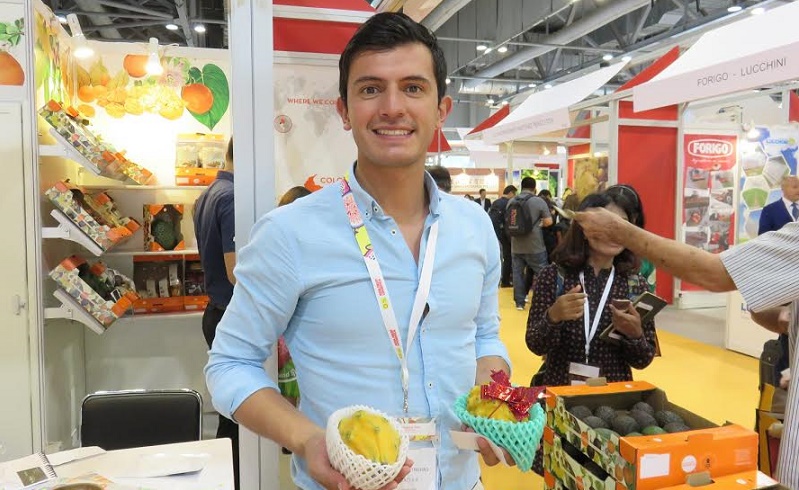Colombia: Ocati pushes for year-round exotic fruit supply

From pitahayas to organic granadillas, Bogota-based exporter Ocati had a colorful display of fruit from Colombia, Ecuador and Peru at Asia Fruit Logistica this month.
In a market like Hong Kong replete with subtropical fruits like litchis, longans and magenta-fleshed dragon fruit, how can South America's exotic counterparts compete?
The answer is education - after all, now commonplace items in Asia like tomatoes, peppers, sweet potatoes and strawberries all originate from the Americas.
Ocati representative Fabio Contreras told www.freshfruitportal.com a big part of his strategy in Asian markets was to teach consumers what the native fruits of his country had to offer, including golden berries (physalis) and the yellow pitahaya.
These products are already sold in Hong Kong, Indonesia, Malaysia and Singapore, but the mainland Chinese market is still not open.
"What we are doing is we want to supply our customers all year and that's why we're increasing our presence," Contreras said.
"We have the pitahaya in Colombia and Ecuador, and now we are entering with avocados from Colombia and now Peru. On the other hand, with our brand from Ecuador which is called 'Tihuatlán', we want to get bigger and have a presence in more markets.
"And we want to grow Ocati in Asia."
To do this, presentation is paramount - for example, serving golden berries without the cape so that consumers don't get confused and can see the fruit's "blossoming orange" color, or teaching them about how the yellow pitahaya is different to the red one so common in the market.
"The market is very attractive. The biggest challenge is teaching them to consume natural products which aren't exactly what they know. We are starting a new culture of exotic food from South America - for that, we are generating a good supply.
"Asian consumers understand the digestive help that this product [pitahaya] has...so older consumers are eating it. Consumers are intelligent and already know how to use this product.
"The difference with the red dragon fruit is that it's cheaper, it's more economical and it doesn't have the same digestive properties. So the Colombian one has a different price, but it has it's medical benefits."
Contreras has also looked at how to make the most of specific trends in the market; for example, marketing campaigns or promotions based around the Moon Festival or Chinese New Year.
Foodservice and bakeries are also good areas for growth, paritcularly for golden berries. Contreras highlighted the fruit was used a lot in Europe for decoration, but more efforts were being made to promote its use in desserts.
Banking on this trend, Contreras said golden berries could also be offered as a dried fruit or dried and coated in chocolate.
On the other hand of the health spectrum, Ocati can now also provide organic fruit.
"We have a new supply of organic granadillas, which we are entering in Europe with at the moment, and we want to export it to other markets," he said.
"It's important and next we'll have organic tamarillos. We are sending via airfreight with a good price for organic granadillas."






































